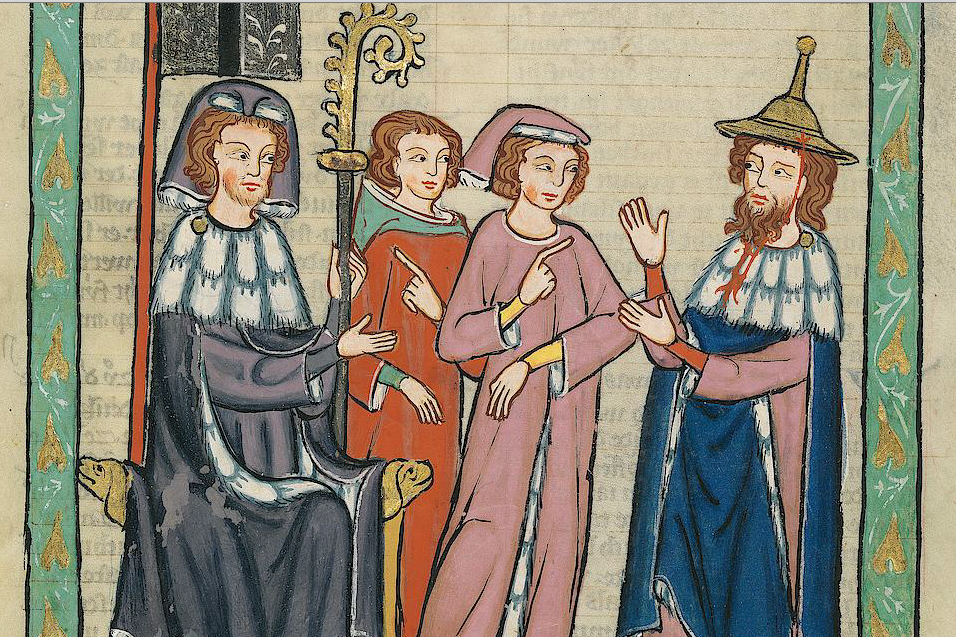Backstory is a CJN column recalling some of the most bizarre, unique, and important moments in Jewish history. Click here for last week’s instalment.
I spent both the first and last birthdays of my 50s visiting the German town of Eisenach, once while passing through as a tourist with my late parents and once while at a conference. Although it’s relatively small, Eisenach has a number of claims to fame. Its most famous son is the incomparable Johann Sebastian Bach (1685-1750) and its skyline is dominated by the imposing and romantic Wartburg, one of Germany’s most famous castles.
Visiting the castle brings forth conflicting emotions for a Jew, since it is associated with two people whose attitudes toward Jews have caused immeasurable harm: first, Martin Luther, the leading light of the Protestant Reformation, who, like Muhammad close to a millennium previously, turned on the Jews later in life when they proved less than receptive to his message; and second, Richard Wagner, the most influential composer of the 19th century, who attempted to eliminate his Jewish rivals by propagating anti-Jewish music theories.
It was at the Wartburg that Luther translated the New Testament into German, and it was here that Wagner set his opera Tannhaeuser.
Wagner’s opera tells the tale of a legendary medieval poetry slam, which involved a number of courtly poets known as minnesaenger (“love-singers”). The most important source for their works is a magnificently illuminated manuscript, the Codex Manesse, from the early 14th century. The Codex comprises both an anthology of minstrel poems and presumably fanciful depictions of their authors. Among them are to be found Tannhaeuser, actually a relatively minor minstrel, and some others who appear as characters in Wagner’s opera. And yet, there is one minnesaenger, among the many in the Codex not mentioned by Wagner, who doesn’t appear to fit into the anticipated pattern of minstrels in Christian Europe.
Unlike the other minstrels in the Codex, who are depicted with short beards or beardless (when their faces aren’t obscured by helmets), this one is portrayed with a long beard and wearing the yellow conical hat that Jews were required to wear at the time to identify themselves to their Christian neighbours. Indeed, the superscription of the picture identifies the minstrel in question as “Suesskind the Jew of Trimberg.” In the picture, Suesskind appears engaged in debate with a Christian potentate, representative of either the state or the Church. Between them, but also opposing Suesskind, are two other men, whose fingers pointing skywards hint at the possible Christian theological content of their side of the discussion.
The Codex also preserves six poems attributed to Suesskind, which are dated on linguistic grounds to the latter half of the 13th century. While they include some motifs typical of contemporaneous minstrel poetry, such as praise of women and ethical qualities, as well as musings about the injustices of this world, much attention has been devoted to a passage in which Suesskind speaks of his rejection by the nobility, as a consequence of which he decides to grow a long beard and wander throughout the land “according to the ancient Jewish manner,” wearing his hat and a long black coat.
Unfortunately, other than the illustration that postdates him by half a century or so and these six poems, nothing else is known about Suesskind. Indeed, there are even some who question whether he was Jewish. Nonetheless, in 1972, Suesskind became the subject of a beautiful novel by Friedrich Torberg, one of the last exponents of the great Austro-Hungarian Jewish literary tradition, whose most famous representative was Franz Kafka.
In his novel, which unfortunately has never been translated into English, Torberg builds a fanciful life of Suesskind around the framework of his poems, which are integrated into the text at appropriate points in the narrative as Suesskind’s reactions to biographical events. While ostensibly about an anomalous 13th-century Jewish minstrel, the novel is a thinly veiled allegory about the situation of the Jewish artist in the modern world, caught between – and ultimately rejected by – both the Jewish and non-Jewish worlds.
In this manner, Suesskind, the first probably Jewish contributor to German literature, has gained further significance by being himself the subject of a modern work of German-Jewish literature that speaks to the Jewish situation today.
Carl S. Ehrlich is professor of humanities and director of the Israel and Golda Koschitzky Centre for Jewish Studies at York University.
